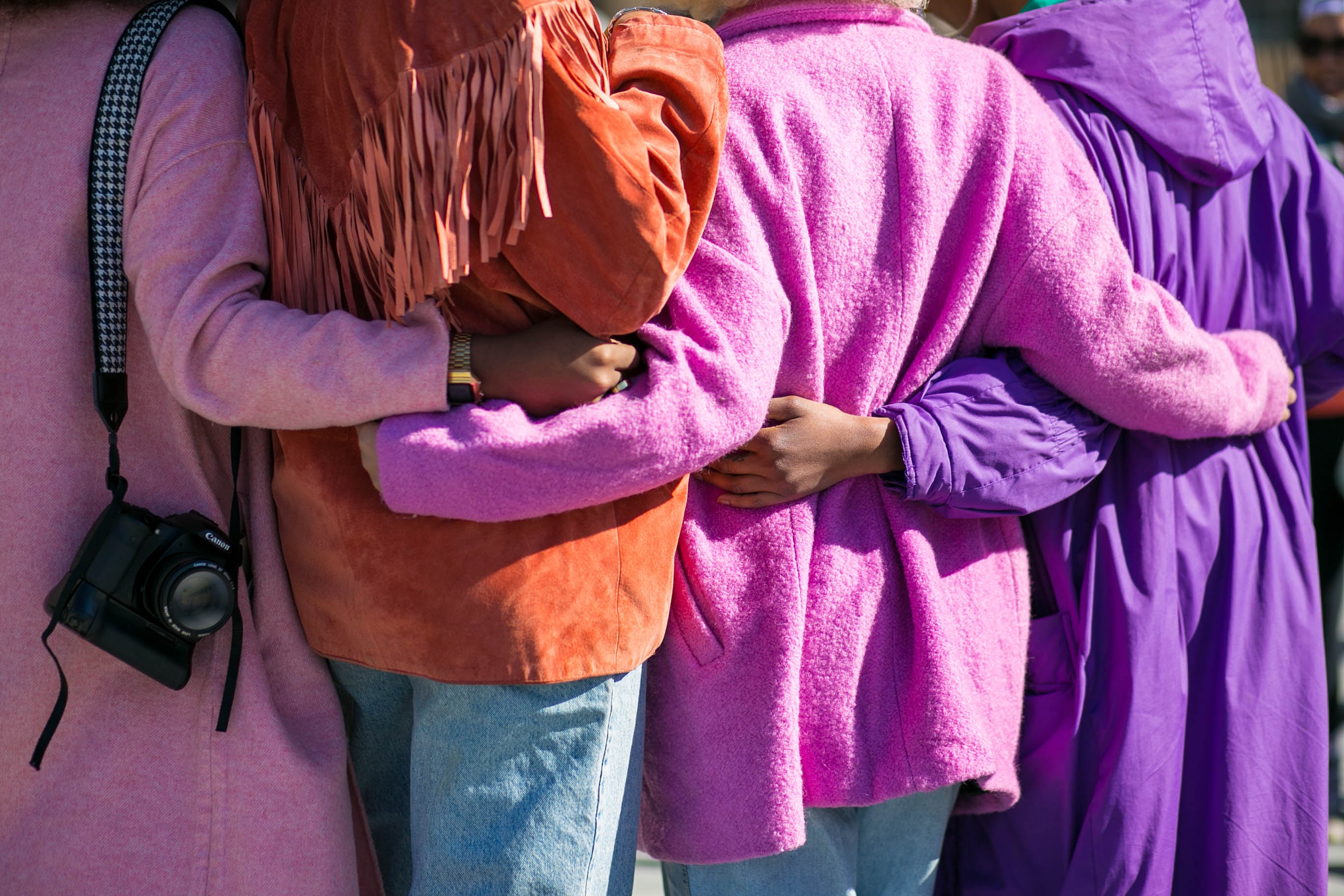Especially in times of stress and upheaval, self-care can help us protect our mental and physical health. However, self-care is only one component of promoting holistic wellness. Our personal well-being is inextricably connected to the well-being of others. To create spaces of joy, justice, healing, and belonging, we must make a collective effort to take care of others, or practice community care.
In this lesson, students learn more about how we are interconnected and explore the ways to practice community care in their school communities and beyond.

Photo by Vonecia Carswell on Unsplash
Opening Ceremony: Human Emotion Machine
Circle up and warmly welcome students to this session.
Explain that we’re going to play a game where we work together to create a machine that produces a specific human emotion.
Invite students to select an emotion. Then invite one participant to start the game as the first part of the machine. You may choose to do this to model risk and vulnerability.
This person steps into the center of the circle and does a specific, repetitive movement that they associate with the selected emotion. In addition to this movement, invite them to make a corresponding sound as if they are a part of a machine.
Another student then joins this first person and adds another movement and sound that melds well with the first person’s sound and movement. One-by-one, students join this evolving machine. After all students have joined the human emotion machine, or have opted to observe the machine in action, the movements speed up and the sounds grow louder.
To end the game, invite students to speed the machine up and then slow the machine down until it comes to a complete stop.
Now, invite a few students to remove themselves from the human emotion machine and join the observers. Continue to remove students until there’s only one left. Invite that student to slow down to a complete stop.
Now invite the group to share what they noticed happening as more and more students left the machine. Elicit or explain that the sounds became quieter, and perhaps the movements became less enthusiastic.
Thank students for their creativity and cooperation.
Main Activity: Exploring Community Care
Ask students: What is “community care”? How is it different from “self-care”?
Elicit or explain that self-care (including things like meditation or getting exercise) can help us protect our own mental and physical health, especially in times of stress and upheaval.
But self-care is only one component of promoting holistic wellness. Our personal well-being is inextricably connected to the well-being of others. To create spaces of joy, justice, healing, and belonging, we must make a collective effort to take care of others, or practice “community care.”
Divide students into groups of 4-5 by counting off by 4s or 5s. If students break into groups that tend to interact with one another frequently, invite volunteers to move to another group.
Explain that in their small groups, students will be sharing their responses to four prompts. They can choose to facilitate their group using circle protocol or as a conversation -- as long as each person within the group gets an opportunity to share.
Distribute chart paper and markers to each group. Invite groups to assign a scribe to write down the ideas shared on chart paper. Invite them to divide up the chart paper into two sections: “What We Do” and “What We Could Do.”
Give groups around five minutes to share with each other (and record) their responses to the first prompt below.
Reconvene the whole group briefly after prompt 1 to introduce prompt 2. Repeat the process for each prompt.
- Prompt #1: In what ways do we practice community care at school and/or within our classroom?
- Prompt #2: In what ways could we better practice community care at school and/or within our classroom? What else should we consider doing to support each other?
- Prompt #3: In what ways do you practice community care within other communities to which you belong (neighborhood, spiritual centers, family, friends, etc.)?
- Prompt #4: In what ways could you better practice community care within these communities?
Invite each group to share their ideas with their peers, either by performing a gallery walk, or by facilitating a traditional share-out.
Debrief by inviting the group to share how this activity felt for them, how they think it might benefit middle school students, and how it might benefit the adults as well.
Closing Ceremony: Go-Round
Pass around the talking piece or invite students to respond popcorn-style to the following prompt:
- One way I will practice community care this week is…
Thank students for considering how they’ll practice community care.